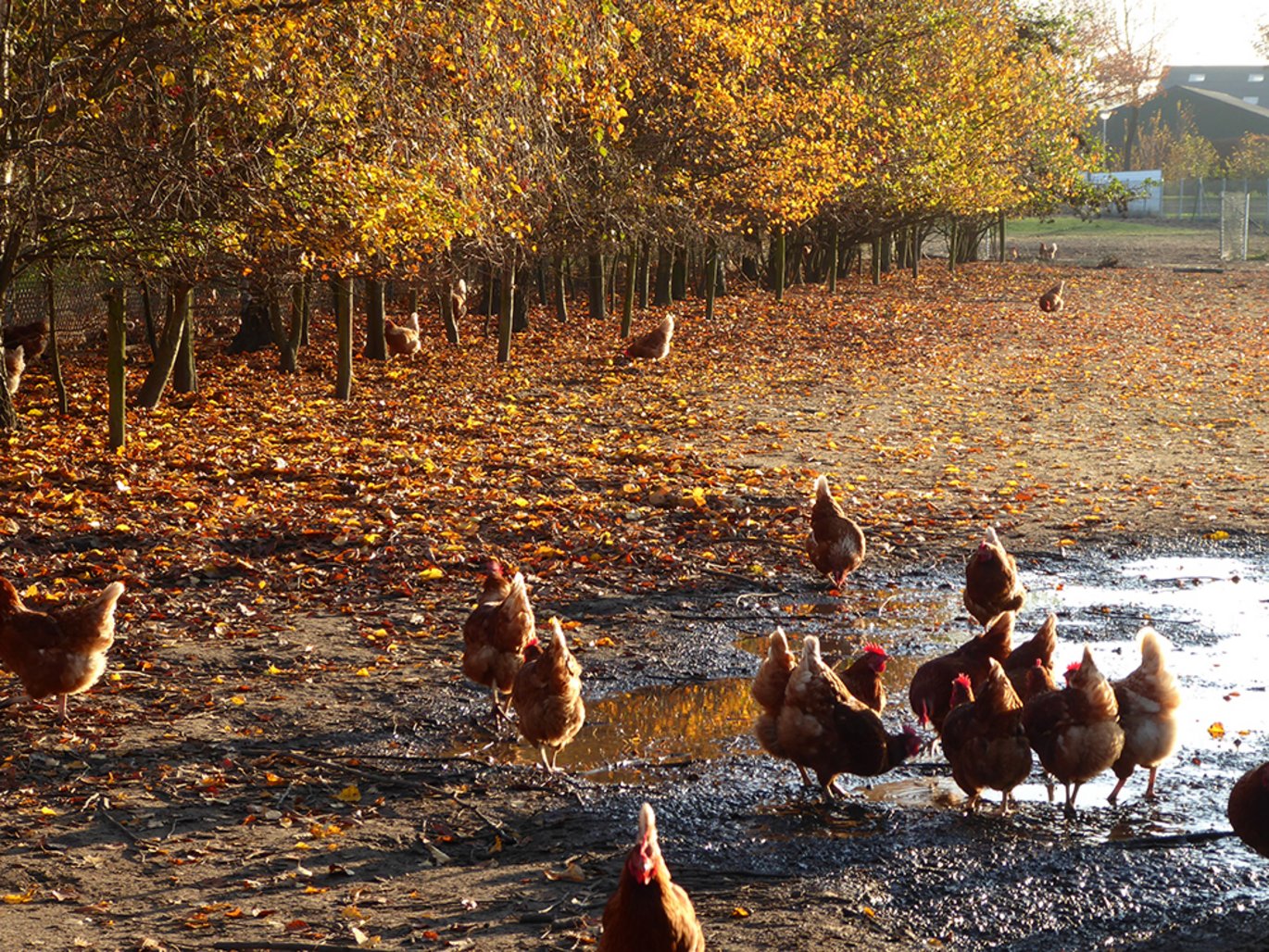What is the role of range use for infections with parasites in laying hens?
In organic layer farms a free-range area is provided for animal welfare reasons. Both higher and lower worm burden (Ascaridia, Heterakis and Capillaria) are described in hens housed in free-range systems compared to other systems. Parasite infections can reduce health, welfare and productivity. In the CORE Organic Cofund project FreeBirds, we investigated the role of the range area in helminth infections.

We have focused on the following questions:
- Is infection of manure different for samples being collected in the free-range or inside the house, assuming to distinguish ‘outside hens’(spending more time outdoors) from ‘inside hens’ (spending less time outdoors)? All hens in this study have the possibility to go outside, but the individuals within one group differ in how much time they actually spend outside.
- Is there an association between the proportion of hens using the range area and parasite eggs in soil and manure?
- Is there an association between parasite eggs in manure, health and production parameters?
The preliminary results from 20 Dutch farms show that manure from outside hens was more frequently infected with Ascaridia and Heterakis and had a higher number of parasite eggs per gram, compared to manure from inside hens. No association was found between range use and parasite infections in soil or manure. No correlations were found between parasite infections and health or production parameters.
Table 1 shows that the number of manure samples positive for Ascaridia and Heterakis collected outside was significantly higher, compared to the number of manure samples positive from inside Also, the mean eggs per gram manure for Ascaridia and Heterakis was significantly higher in outside manure, compared to inside manure. The differences for Capillaria were not significant. No correlations were found between %`HensOut’ (see definition in Method box below) and the number of soil or manure samples being positive for Ascaridia and Heterakis, nor for Capillaria. No correlations were found between % HensOut and the mean eggs per gram soil or manure. No correlations were found between number of soil or manure samples from ‘outdoor hens’ being positive for Ascaridia and Heterakis or Capillaria with the ‘health according to the farmer’, laying percentage at 60 weeks or mortality percentage till 60 weeks.
Table 1: Results of worm egg counts in soil and manure from 20 Dutch organic flocks
| Ascaridia + Heterakis | Capillaria | ||
| % of samples positive | Mean EPG* (min-max) | % of samples positive | Mean EPG* (min-max) |
Soil (6 per farm) | 12 | 7 (0-17) | 0 | 0 (0-0) |
Manure outside (7 per farm) | 73 | 405 (29-2386) | 24 | 39 (0-189) |
Manure inside (7 per farm) | 62 | 243 (0-1486) | 19 | 26 (0-114) |
Manure from outside and inside together (14 per farm) | 68 | 324 (14-1936) | 21 | 32 (0-150) |
* Deworming is commonly advised when manure contains more than 200 Ascaridia/Heterakis eggs per gram or contains Capillaria.
Methods
Totally forty flocks in Sweden, the Netherlands and Italy are being visited once when hens are at least 45 weeks old and at least 3 weeks after a deworming. Together with farmers the proportion of hens using the free-range was estimated assuming optimal conditions (% HensOut), as well as health status (score on scale 1 (=bad) to 10 (=perfect)). The production parameter percentage of lay (=number of eggs laid per day / number of hens) at 60 weeks and the health parameter percentage of mortality till 60 weeks (percentage of hens died on the farm till 60 weeks of age) were collected too. Six soil samples per farm were taken at 5, 20 and 50 m from the entrance to the hen house. Seventy individual manure droppings, pooled into 7 samples were collected inside and 70, pooled into 7, outside. On the free-range, manure samples were collected at 50 m from the hen house and further away, assumed to originate from ‘outside hens’. Manure samples inside were taken from the inner part of the barn, away from the pop-holes, assumed to originate from ‘inside hens’. All soil and manure samples, 20 per farm, were analysed for parasite eggs per gram (EPG; McMaster method).
Authors
Monique Bestman1, Thea van Niekerk2, Elske N de Haas3, Valentina Ferrante4, Stefan Gunnarsson5
1Louis Bolk Institute (NL); 2Wageningen Livestock Research (NL); 3Institute for Agricultural and Fisheries Research (BE); 4University of Milano (IT); 5Swedish University of Agricultural Sciences (SE).
